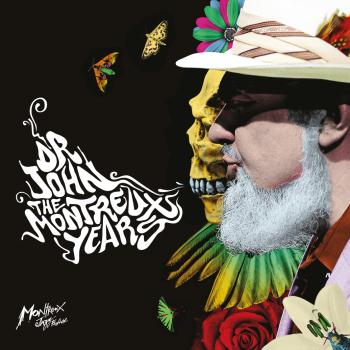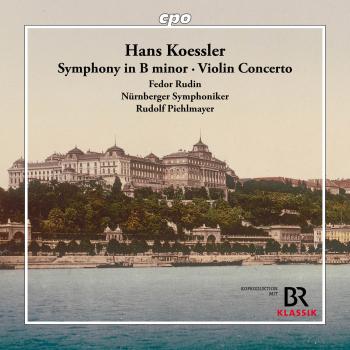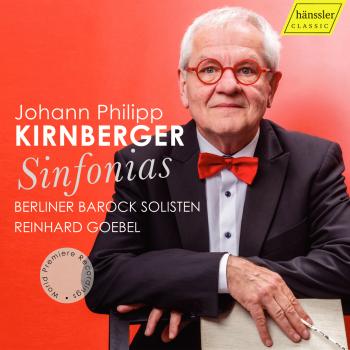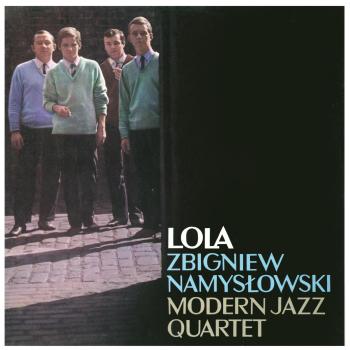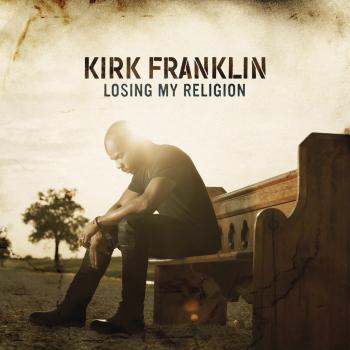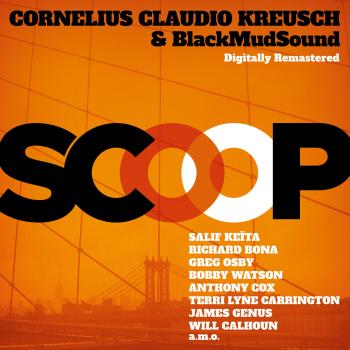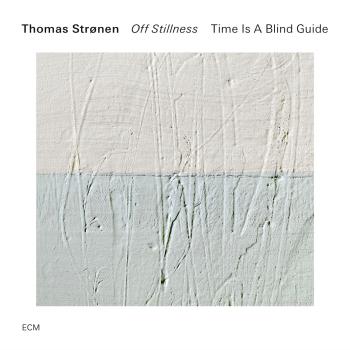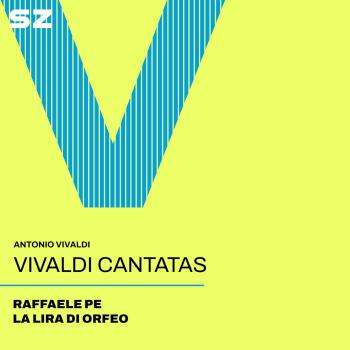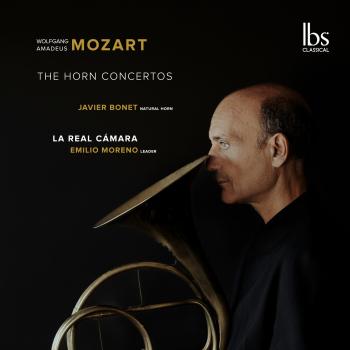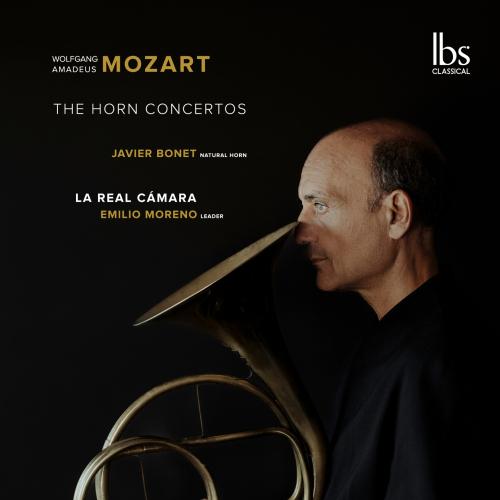
MOZART Natural Horn Concertos Javier Bonet, La Real Cámara & Emilio Moreno
Album info
Album-Release:
2025
HRA-Release:
29.07.2025
Label: IBS Classical
Genre: Classical
Subgenre: Concertos
Artist: Javier Bonet, La Real Cámara & Emilio Moreno
Composer: Wolfgang Amadeus Mozart (1756-1791)
Album including Album cover
- Wolfgang Amadeus Mozart (1756 - 1791): Concerto in E-flat Major, K370b:
- 1 Mozart: Concerto in E-flat Major, K370b: I. Allegro 05:28
- 2 Mozart: Concerto in E-flat Major, K370b: II. Rondeau - Allegro 05:30
- Concerto in E-flat Major, K417:
- 3 Mozart: Concerto in E-flat Major, K417: I. Allegro 06:33
- 4 Mozart: Concerto in E-flat Major, K417: II. Andante 03:11
- 5 Mozart: Concerto in E-flat Major, K417: III. Allegro 03:52
- Concerto in E-flat Major, K495:
- 6 Mozart: Concerto in E-flat Major, K495: I. Allegro maestoso 08:08
- 7 Mozart: Concerto in E-flat Major, K495: II. Andante cantabile 04:10
- 8 Mozart: Concerto in E-flat Major, K495: III. Rondo 04:02
- Concerto in E-flat Major, K447:
- 9 Mozart: Concerto in E-flat Major, K447: I. Allegro 07:15
- 10 Mozart: Concerto in E-flat Major, K447: II. Romanza - Larghetto 04:11
- 11 Mozart: Concerto in E-flat Major, K447: III. Allegro 03:56
- Concerto in D Major, K412:
- 12 Mozart: Concerto in D Major, K412: I. Allegro 04:56
- 13 Mozart: Concerto in D Major, K412: II. Rondo - Allegro 04:03
- Concerto in E Major, K494a:
- 14 Mozart: Concerto in E Major, K494a: Allegro (fragment) 03:12
- Concerto KV 412:
- 15 Mozart: Concerto KV 412: II. Rondeau 04:47
Info for MOZART Natural Horn Concertos
Probably the most perfect version ever recorded of Mozart’s concertos with the incredibly difficult Natural Horn. The use of period instruments, a movement which began in the middle of the past century, is no longer a passing fad or something novel. Rather, it represents a fundamental part of our musical culture whose importance goes far beyond the simple nostalgic or poetic recreation of a score. The “archaic” technical characteristics of period instruments often force performers to seek solutions that, while resulting in a sound closer to historical reality, often surprise the listener. Technical constraints are even more evident in wind instruments, given that the significant evolution in their construction has accentuated the differences that emerged over the course of their development.
The survival of Mozart’s horn concertos after his death is the result of a partnership, supposedly encouraged by Haydn, between Mozart’s wife Constanze and the young composer-publisher, Johann André of Offenbach am Main. André had a genuine interest in Mozart’s music and was also eager to ensure the success of the publishing business which he had recently inherited from his father so the opportunity, in 1799, to buy all the manuscripts which Constanze had been left by the composer must have seemed too good to miss. As a result, on 8 November he and Constanze signed a contract under which André paid 2550 Florins for her collection of Mozart’s manuscripts and, in addition, undertook to give Constanze four free copies of each work as it was published.
Among these were the manuscripts, not all of them complete, of Mozart’s horn concertos. None of these had been published during the composer’s lifetime, and in 1800 André wrote again to Constanze because he anticipated producing a complete edition Mozart’s music and was concerned about missing portions of the manuscripts of the horn concertos K417 and K495. Constanze’s reply, dated 31 May, included a list of some fragments of horn concertos which she still had for sale and while André was only really interested in publishing complete works, he agreed to buy them as his interest in Mozart’s music went well beyond financial considerations.
The earliest of the works for horn in Constanze’s collection comprised some pages from a concerto in E flat which Mozart had written around March 1781 at about the time when he moved to Vienna. The score was incomplete: there was no slow movement, and the orchestration was unfinished, and as such, it was of little use to André. In 1856, on the centenary of his father’s birth, Carl Thomas Mozart compromised the music’s survival further by cutting up the pages of the first movement (a sketch known to Mozart scholars as “K370b”) and giving them away as souvenirs. During the twentieth century, musicologists gathered up the surviving fragments, and while a few bars are still missing, and Mozart only ever wrote what appears to be a sketch linking the end of the movement’s exposition to its recapitulation, enough survives to allow a convincing reconstruction to be made. As the Rondo appeared just to lack some of its orchestration, Breitkopf and Härtel published its sketches as K371 in their collected edition of Mozart’s works, and the first of many subsequent completions of the score was made around 1909 by the horn player and composer Henri Kling. The discovery of a further 60 bars in 1991, which are demonstrably a part of the same movement, revealed a piece that is more spacious and elegant than was previously thought and these are included in the performance on this recording. This two-movement concerto is performed here in a version by musicologist and pianist Robert Levin as K370b + 371.
Many of Mozart’s works for the horn were written to be played by his close friend, Joseph Leutgeb, who was said by the Mercure de France in 1770 to be so skilled at playing the instrument that he could “sing an adagio as perfectly as the most mellow, interesting and accurate voice.” However, Leutgeb denied all knowledge of this concerto when Constanze showed it to him, so it is possible that Mozart intended it to be played by the Munich horn player Franz Lang – Mozart had been in Munich immediately before he moved to Vienna – or by Jacob Eisen, the second (lower) horn player at the National Theatre in Vienna. The solo part of the concerto certainly seems to have been written for someone who specialised in the instrument’s lower register, and Constanze told André that Eisen’s widow had some horn music which Mozart had given to the player. However, in the same letter Constanze suggested that she herself had the manuscript of the Rondo, leaving the possibility that it was written for someone else and that Eisen’s widow had a different work in her possession. ...
Javier Bonet, horn
LA REAL CÁMARA
Emilio Moreno, direction
Javier Bonet
began his studies in Spain under the tutelage of his father and Miguel Rodrigo in Valencia. Continuing his studies he accomplished his faculties at Folkwang Music Academy in Essen, Germany, with Hermann Baumann. He also took part in masterclasses of Daniel Bourgue, Philip Farkas, Vicente Zarzo and Ab Koster. Bonet is a tireless researcher in the field of horn composition and a world-wide sought-after soloist and chamber musician. As a player of the natural horn he enjoys an internationally acknowledged reputation as an interpreter on historical instruments, which are likewise the domain of the ensemble Corniloquio, founded by Bonet himself. He has released numerous recordings of the natural horn on CD , as e.g. four CDs together with ARSIS. Two with the pianist Miriam Gómez-Morán (Tableau Musical and sonatas for horn and piano) and two CDs together with Corniloquio, one of which dedicated to L. Dauprat and the other to J. F. Gallay. In the genre of the French horn his productions with ARSIS have turned out to be outstanding, among which the recordings of Great Romantic Horn Concertos, Romances pour le cor. And for the label VERSO “Naturaleza Humana”, concerto for French horn and orchestra, by the composer Juanjo Colomer. Bonet’s most celebrated recording on video and CD, also for the label ARSIS contain a version of Mozart’s horn concertos played by the Munich Radio Symphony Orchestra conducted by Hermann Baumann. The latest recording, by the title of Just For Fun with Miriam Gómez-Móran at the piano as well, released in 2016 for the new label EXAUDIO contains his own transcriptions of some popular music for piano, violin, cello or human voice. This commendable collection of romantic and virtuoso pieces for horn and piano includes titles like ‘The Bumle Bee’, ‘Monti’s Czardas’, ’The Pink Panther’, ‘The Swan’ and arrangements of pieces by Sarasate, Tchaikovsky, Chopin, Ravel and Debussy, just to name the most significant ones. Bonet has not only given the first performance of brand-new works by some contemporary composers, but he also excels in the field of chamber music. Furthermore, he is best-known as an experienced instructor on the sector of musical pedagogy. As a horn soloist he has performed with the majority of the famous Spanish orchestras as well as with other orchestras in several European countries and in Taiwan, China, Venezuela, Argentina, Japan and the U.S.A. Highlight his last tour with Miriam Gómez-Morán at the piano, touring the US with a final recital at Carnegie Hall in New York. Bonet has gained great acclaim for the performance of the world premiere of concertos for horn and orchestra by E. Cosma, J. Colomer, M. Constant and for the Spanish first performance of the Ligeti “Hamburgisches” Horn Concert. Only lately the concerto Ab Origine by Salvador Brotons with Bonet and the Orquesta Nacional de España enjoyed its most remarkable world premiere. As a horn teacher Bonet offers regular courses in Spain and at several foreign conservatories in Lisbon, Porto, Paris, Budapest, Berlin, Bloomington, Seoul, Mexico City, Caracas, Peking or Tokyo. As a professor of horn he worked with the Conservatorio Superior de Salamanca and at present holds a chair as a professor of natural horn and French horn at ESMUC in Barcelona. – Being a prize-winner himself in various international competitions he is now active in the jury of the most reputed competitions as they take place in Porcia, Geneva or with the German Radio Corporation ARD in Munich. Javier Bonet has been a steady member of the Orquesta Nacional de España since 1987.
The Real Camera
was founded in 1992 by Emilio Moreno with the objective prioritario de difundir el importante patrimonio musical hispano de los siglos XVII, y extranjeros, all of them reconocidos individualmente por su prestigio internacional y su gran experiencia en la práctica histórica. The Real Camera is active in concert halls, festivals and seasons in Spain, in Europe, in the North America, in Centroamérica and in Japan, including in practice all of the programs in Spanish patrimonial music, which has acquired an important value Discography in Glossa jalonada de prizes and distinctions (“Premio Internazionale Antonio Vivaldi” in Italy, the “Prix Cecilia” in Belgium, the “Premio Festclásica” in España or various “Diapasons d’Or” in Francia), discography consagrada íntegramente a la música española con special attention to the figure of Boccherini. The latest and most recent discographic recording of the Real Camera is dedicated to the opera of the Sevillan Jesuit Francisco José de Castro, the “Corelli Español”, from the Trattenimenti Armonici da Camera de 1695, a selection of the cuales se presenta en este concerto. Junto with Emilio Moreno, violinist and violista, director, pedagogo (professor at the ESMUC, Barcelona), investigador, concertino de different orquestas barrocas europeas y viola principal and fundador of the Orquesta del Siglo (La Haya, Bolonia), soloist considered the mayor of special specialist in the Italian instrumental music barroca and fundador of the Ensemble Aurora, the violonchelista Mercedes Ruiz, colaboradora of the major instrumentistas, cantantes and groups national and international and with a large carrera como sololist and pedagoga, and the hermanos Aarón y Pablo Zapico, representatives of the new generation of Spanish music with an important sector like solistas, directors, colaboradores de otros solistas y grupos, y fundadores de Forma Antiqva, uno de los grupos Españoles junto a La Real Cámara with más proyección internacional en la actualidad.
Emilio Moreno
is one of Europe’s most distinguished performers of music from the baroque and classical periods and whose musical qualities are matched by the impact of his knowledge. Following studies in music and philosophy in his native Madrid, Moreno was taught by Jaap Schröder at the Schola Cantorum Basiliensis in Switzerland before taking a doctorate in musicology at the Universidad Autónoma of Barcelona. He has since had many years of practical experience around the world as a soloist, conductor and partner of the very best ensembles and musicians: Frans Brüggen, Gustav Leonhardt, La Petite Bande, the Ensemble 415, La Chapelle Royale, Stravaganza Köln, etc. He currently leads the viola section of Brüggen’s Orchestra of the 18th Century.
As an eminent music researcher and musicologist, Moreno is contributing in a definitive way to the rediscovery of forgotten music from the Spanish baroque and classical periods. The outcome of his research can be heard in the many concerts and recordings he regularly produces with his ensembles La Real Cámara and, more recently, with his new period instrument orchestra, El Concierto Español. With La Real Cámara, Moreno (a founder of the Glossa label) has provided a survey of music from the times of the painter Francisco Goya, as well as notable discs devoted to the music of Luigi Boccherini (Los últimos tríos and Boccherini en Boadilla) in the company of artists such as Enrico Gatti, Wouter Müller and Gaetano Nasillo.
Moreno today teaches at the ESMUC in Barcelona, where he has been the director of the Department of Early Music. He regularly leads courses and gives master classes around the world.
This album contains no booklet.

